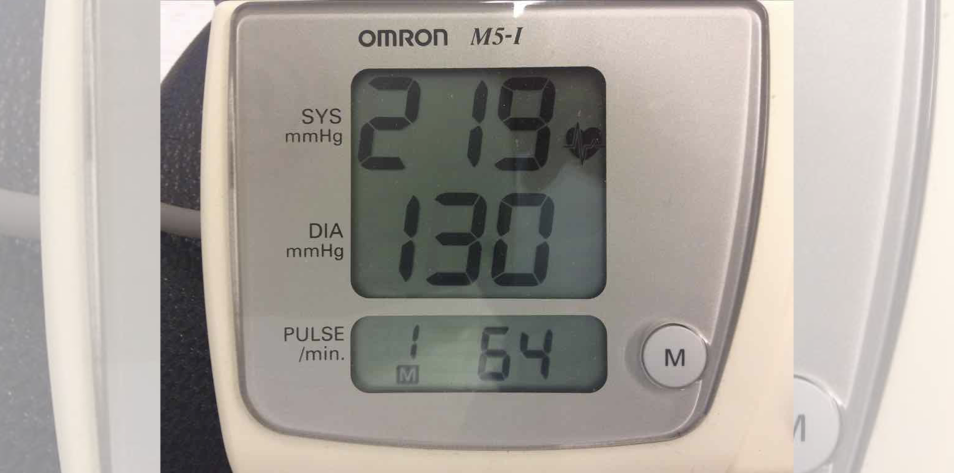
Learning Objective
- Review optimal approach to uncontrolled hypertension
A 45-year-old cis woman presents to the office with uncontrolled hypertension and a current blood pressure of 242/112 after speaking with an ex-partner and smoking a cigarette immediately before coming into the office.
The patient reports no chest pain, shortness of breath, headache or dizziness, and recent labs were normal. In-office intermittent monitoring shows a rapid de-escalation of the blood pressure to 175/110 over 15 minutes and the patient is still not reporting any symptoms.
Reviewing the chart, you find the patient is currently taking amlodipine 5 mg daily.
What are the Next Steps With this Case of Hypertensive Urgency?
Uncontrolled hypertension is a common problem, affecting 64% of people already diagnosed with hypertension. The most important items to accomplish during this visit are:
- Verify that the patient has no physical signs or symptoms of end-organ damage from elevated blood pressure
- Confirm that the blood pressure is elevated outside the office (white coat syndrome)
- Assess clinical risk factors for hypertension such as sleep apnea, alcohol or drug use, a history of kidney disease or thyroid problems
- Advise lifestyle modifications
- Confirm that the patient is taking prescribed medications regularly
- Treat with maximally tolerated doses of a dihydropyridine calcium channel blocker with an ace inhibitor or angiotensin receptor and a thiazide diuretic.
On further assessment, the patient has no other medical problems and has been taking her amlodipine regularly. Home blood pressure is 150-160/100-110, she does not snore at night or drink alcohol, and she has been following a low-sodium diet and exercising 150 minutes each week. Review of systems indicates no chest pain, headaches, shortness of breath, exercise intolerance or edema. Her physical exam shows no neurologic deficit, normal heart sounds, clear lung fields, no abdominal bruit, good peripheral pulses and no edema.
The patient is diagnosed with uncontrolled, undertreated hypertension. Additional medications — lisinopril 10 mg with hydrochlorothiazide 12.5 — are added. She is advised to stop smoking and offered medical management with varenicline. Follow-up labs are ordered with BUN, creatinine, and potassium to be done in one week and the patient is asked to return in two to four weeks to check her blood pressure control.
Further Reading
References
Carey RM, Calhoun DA, Bakris GL, Brook RD, Daugherty SL, Dennison-Himmelfarb CR, Egan BM, Flack JM, Gidding SS, Judd E, Lackland DT, Laffer CL, Newton-Cheh C, Smith SM, Taler SJ, Textor SC, Turan TN, White WB; American Heart Association Professional/Public Education and Publications Committee of the Council on Hypertension; Council on Cardiovascular and Stroke Nursing; Council on Clinical Cardiology; Council on Genomic and Precision Medicine; Council on Peripheral Vascular Disease; Council on Quality of Care and Outcomes Research; and Stroke Council. Resistant Hypertension: Detection, Evaluation, and Management: A Scientific Statement From the American Heart Association. Hypertension. 2018 Nov;72(5):e53-e90. doi: 10.1161/HYP.0000000000000084. PMID: 30354828; PMCID: PMC6530990.
Guideline for the pharmacological treatment of hypertension in adults [Internet]. Geneva: World Health Organization; 2021.
Published November 29, 2023
Want more clinical cases?
Join Figure 1 for free and start securely collaborating with other verified healthcare professionals on more than 100,000 real-world medical cases just like this one.